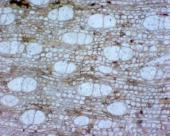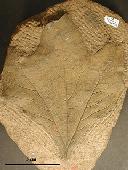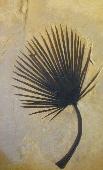|
 See More Images See More Images
(34 total)

Phyllanthoxylon
© 2009 Ana Luisa Carreno

Erlingdorfia montana
© 2004 UCMP

Sabalites sp.
© 2002 The Virtual Fossil Museum
|
What are Angiosperms? Angiosperms are seed-bearing plants that produce flowers. The flowers are not always showy like the ones in your garden. In fact, some flowers are barely visible at all, but all members of this group have them, including large trees, tiny grasses, and everything in between. Most flowering plants are classified as either monocots or dicots, based on the number of embryonic leaves (also called seed leaves or cotyledons). However, some angiosperms have a mix of both monocot and dicot characters and have unknown relationships. They are included here as “other angiosperms.” First known fossil occurrence: Cretaceous. Last known fossil occurrence: Quaternary. This group has living relatives. Cool Angiosperms links: Search for images of Angiosperms on Google |
See Angiosperms from the:
|
|





